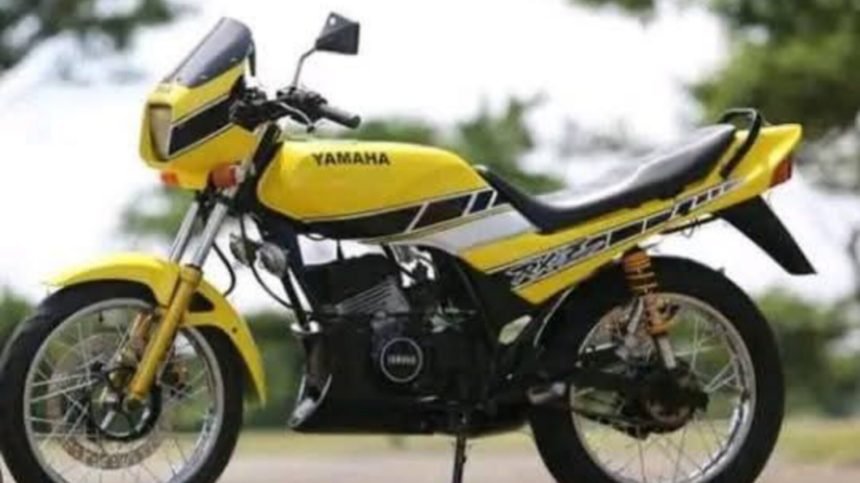Yamaha RXZ – The 2-Stroke Legend That Ruled Our Hearts
The Yamaha RXZ. For those who came of age in the late 90s and early 2000s, this name sparks more than just memories—it awakens emotion. Introduced in India in 1997, the RXZ was not just a motorcycle. It was a revolution on two wheels. It had style, it had power, and more than anything else—it had soul.
Arrival of the RXZ in India
When Yamaha launched the RXZ in India, the market was already in love with the RX100 and RX135. But the RXZ took things a notch higher. It was Yamaha’s answer to the growing demand for a sportier, more aggressive-looking 2-stroke bike. And boy, did it deliver.
The RXZ came in like a rockstar. With sharp lines, a sporty stance, and a screaming 2-stroke engine, it stood out from every other bike on the road. It was priced around ₹42,000 at launch—a premium back then—but those who knew bikes understood its worth.
Technical Specifications: A Beast Beneath
The Yamaha RXZ was powered by a 132cc, air-cooled, 2-stroke, single-cylinder engine. It produced 14 bhp of raw power and 12 Nm of torque, paired with a 5-speed gearbox. The bike was also equipped with Yamaha’s torque induction system, which made the power delivery smoother and punchier at low revs.
Unlike many bikes of the era, the RXZ featured a disc brake in the front—a bold move that added to its performance appeal. With its lightweight chassis and slim body, the bike could hit top speeds of over 110 km/h. But it wasn’t just about the numbers—it was the way the RXZ delivered that power that made it special.
The Iconic 2-Stroke Sound
Ask any RXZ rider what they miss the most, and they’ll tell you—it’s the sound. That crisp, throaty, 2-stroke exhaust note was music to the ears. It wasn’t just loud—it had a rhythm, a pulse, a life of its own. You could hear an RXZ coming from a mile away, and your heart would skip a beat.
And when you downshifted, especially while stopping next to a bus or a crowd—the engine crackled and sometimes even seized if you pushed too hard without skill. But for the young and restless, that was part of the charm.
College Days and RXZ Dreams
I still remember the time I was in college. The RXZ wasn’t just a bike—it was a dream. Every guy wanted one. Every girl noticed one. It was the ultimate symbol of cool. And I was lucky. I got to ride with Kannan Chettan, who owned one of the cleanest RXZs in town.
Every evening after school, sharp at 4 PM, we’d meet. One spin on the RXZ and everything felt right. I still remember the day we were waiting next to a bus. Kannan downshifted sharply, revved hard—and boom! The engine seized. My heart stopped. But at the same time, I was thrilled. That was the RXZ for you—raw, unpredictable, thrilling.
Learning to Ride: Patch’s RXZ
Later, when I started learning to ride properly, I practiced on Patch’s RXZ. That bike had attitude. Shifting gears without releasing the throttle was torture. It would cut power sharply at full throttle. But the moment you let go and twisted the throttle again—it roared like a beast awakened.
I still remember the feeling of holding onto that throttle, the engine humming like a cat, then growling like a tiger with just a twist. It was alive. It wasn’t just a bike—it was a living machine that demanded respect.
RXZ vs Modern Motorcycles
Today’s motorcycles are smoother, more refined, and environmentally friendlier. They come with ABS, digital displays, and silent engines. But they lack something the RXZ had in abundance—character.
The RXZ didn’t just take you from point A to point B. It made you feel every bump, every rev, every gear change. It taught you how to ride. You had to know the engine, feel the vibrations, and learn its rhythm. It punished sloppy riding and rewarded skill. In an era before traction control and ride modes, the RXZ was your teacher.
Why It’s So Hard to Find One Today
Despite its cult following, the RXZ is becoming increasingly rare. Emission norms, bans on 2-stroke engines, and changing preferences have made it a collector’s item. Even if you’re willing to pay ₹1 lakh or more, finding a well-maintained RXZ is a challenge.
Many were abused, modified, or simply discarded. Those that remain are either hidden away in garages or priced beyond reach. Enthusiasts still search online, visit workshops, and attend vintage bike meets in hopes of finding the perfect RXZ.
The RXZ Legacy
For a generation of bikers, the Yamaha RXZ represents more than nostalgia. It’s a badge of pride. It’s a symbol of freedom, rebellion, and passion. It’s the sound of youth. The smoke, the smell of 2T oil, the explosive acceleration—all etched in memory.
The RXZ wasn’t just a motorcycle. It was a moment in time. A perfect storm of engineering, attitude, and emotion. And for those of us lucky enough to ride or even witness it in its prime, the RXZ will forever be legendary.
Conclusion: The 2-Stroke That Lives Forever
The Yamaha RXZ may be a thing of the past in the eyes of the modern motorcycle industry, but for those who lived through its era, it is immortal. No other bike has been able to recreate that same thrill, that same emotional connection.
If you ever get a chance to ride one again, don’t miss it. Close your eyes, twist the throttle, and let the 2-stroke magic take you back. Because some machines aren’t just built—they’re born to be legends.
To the RXZ and the unforgettable memories—thank you.







